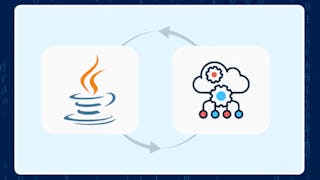The "Multithreading in Golang" course offers an in-depth exploration of concurrent programming concepts using the Go programming language. Through a combination of theoretical explanations and practical hands-on exercises, participants gain a comprehensive understanding of how to leverage the power of multithreading to develop efficient and scalable applications. The course covers topics such as goroutines, channels, synchronization primitives, race conditions, mutexes, and atomic operations. Participants learn how to design and implement concurrent algorithms, manage shared resources safely, and avoid common pitfalls such as deadlock and data races.



Mastering Multithreading with Go
This course is part of Go Programming Language Specialization

Instructor: Edureka
Included with 
Recommended experience
Recommended experience
Details to know

Add to your LinkedIn profile
18 assignments
See how employees at top companies are mastering in-demand skills

Build your subject-matter expertise
- Learn new concepts from industry experts
- Gain a foundational understanding of a subject or tool
- Develop job-relevant skills with hands-on projects
- Earn a shareable career certificate


Earn a career certificate
Add this credential to your LinkedIn profile, resume, or CV
Share it on social media and in your performance review

There are 5 modules in this course
The first week of this course is a gateway to understanding the fundamental principles that underlie concurrent programming. We'll work on the essential components of multithreading, such as threads, parallel computing, processes, memory sharing, advanced concurrency patterns, and communication mechanisms.
What's included
13 videos3 readings5 assignments
In the second week of this course, you'll unravel the art of synchronizing – lightweight, concurrent threads in the Go language using Mutexes. You will also design concurrent programs that harness the full potential of goroutines while ensuring thread safety through the strategic use of Mutexes.
What's included
10 videos4 readings4 assignments
This module is designed to delve into the concept of conditional variables in Golang, exploring how they facilitate communication and synchronization between goroutines. Additionally, the potential pitfalls that can lead to deadlocks and strategies to prevent and resolve them. By mastering these concepts, developers can ensure the reliability and efficiency of their concurrent applications in Golang.
What's included
9 videos1 reading4 assignments
The forth week of this course is tailored for Go developers to seek an uderstanding of barriers, atomic variables and spinning locks. By mastering these concurrency primitives, developers can enhance the efficiency, scalability, and reliability of their Golang applications in concurrent environments.
What's included
9 videos6 readings4 assignments
This module is designed to assess an individual on the various concepts and teachings covered in this course. Answer a comprehensive quiz which marks you as a learner who is confident in Mastering Multithreading in Go.
What's included
1 video1 reading1 assignment1 discussion prompt
Explore more from Software Development


University of California, Irvine


Edureka


Board Infinity
Why people choose Coursera for their career




New to Software Development? Start here.

Open new doors with Coursera Plus
Unlimited access to 10,000+ world-class courses, hands-on projects, and job-ready certificate programs - all included in your subscription
Advance your career with an online degree
Earn a degree from world-class universities - 100% online
Join over 3,400 global companies that choose Coursera for Business
Upskill your employees to excel in the digital economy
Frequently asked questions
Multithreading in Golang refers to the concurrent execution of multiple threads or goroutines within a Go program. Goroutines are lightweight threads managed by the Go runtime, and they enable concurrent execution of code segments within the same address space.
The prerequisites for Mastering Multithreading in Go include: - Computer Science Fundamentals: Familiarity with fundamental concepts such as data structures (arrays, slices, maps) and algorithms can assist in applying these concepts while Programming with Golang. - Text Editor or Integrated Development Environment (IDE): Familiarity with using a text editor (e.g., VSCode, Sublime Text) or an IDE (e.g., GoLand, VS Code with Go extension) for writing and managing code. - Command-Line Interface (CLI) Familiarity: Basic knowledge of using the command line interface for compiling, running, and managing files can be beneficial for working with Go tools. While these are helpful prerequisites, it's worth noting that Mastering Multithreading in Go is designed to be user-friendly and accessible to many users. Beginners can start with basic tasks and gradually build their skills as they gain more experience with the tool.
Operating System Compatibility: Golang is compatible with the following Windows operating systems:
Windows 11 (64-bit)
Windows 10 (64-bit)
Processor: A 64-bit processor with at least 1.4 GHz speed or higher is recommended.
Memory (RAM): A minimum of 8 GB RAM is required for better performance.
Hard Drive Space: You need at least 2 GB of free hard drive space for the installation.
More questions
Financial aid available,



